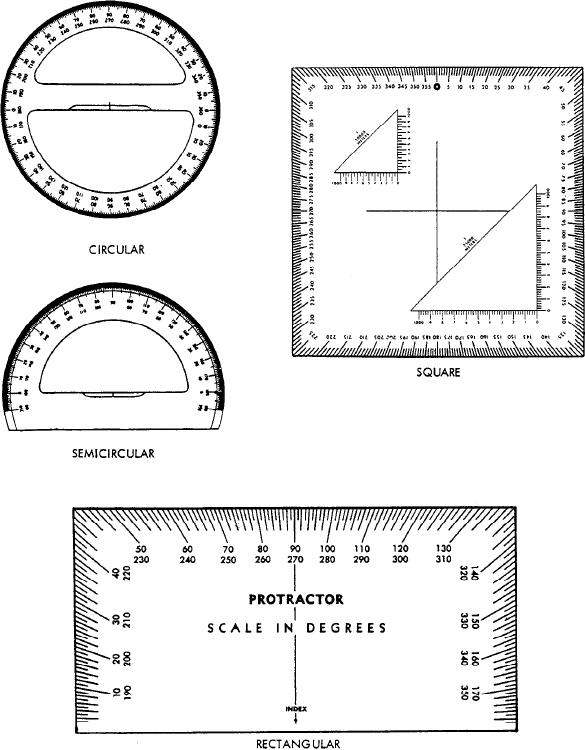
Figure 5-33.--Types of protractors.
is under the luminous line and move back the same
luminous line). To make a 90 turn to the left, turn until
distance you originally moved out. Finally, you turn
the center of the luminous letter W is under the luminous
until the north arrow is under the luminous line and go
line. The compass setting (bezel ring) does not require
ahead on your original course. This method works
changing, and you can be sure of accurate 90 turns. For
regardless of what your initial azimuth may be.
example, you decide to detour to the right. You turn until
E is under the luminous line and move ahead in that
direction until you have outflanked the obstacle. You
Protractor
then turn until the north arrow is under the luminous line
and move parallel to your original course until you have
Protractors come in several formsfull circle, half
circle, square, and rectangle (fig. 5-33). All of them
bypassed the obstacle. You then turn again until the W
5-23



